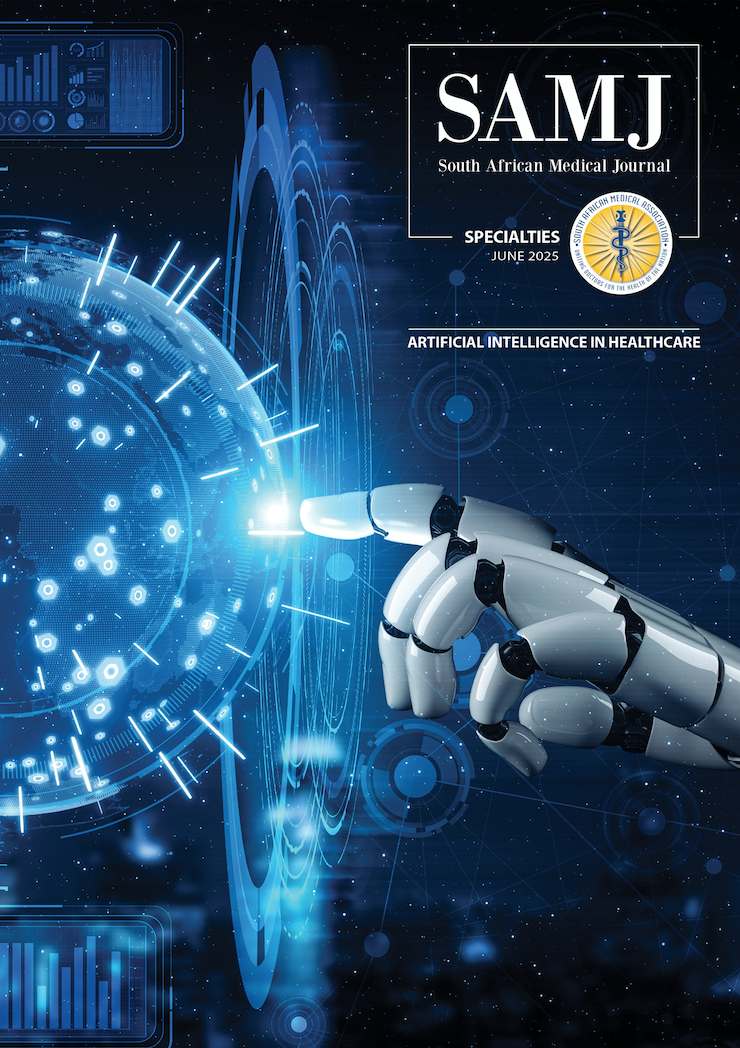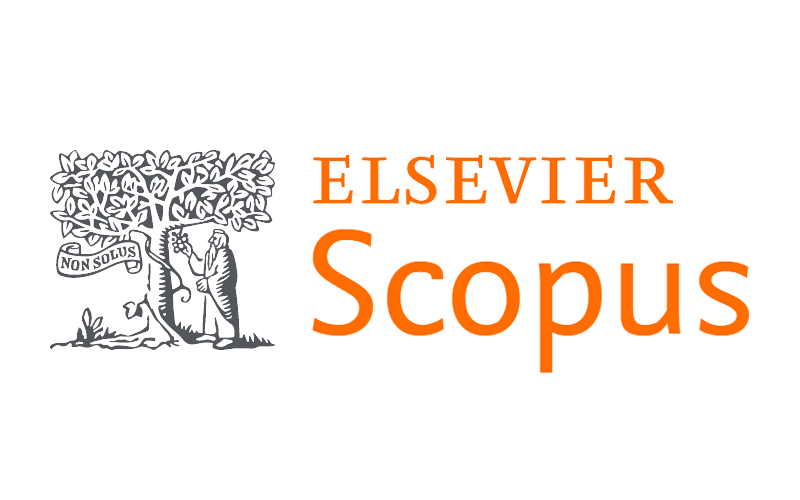The ethics and law of medical AI in South Africa: Balancing innovation with responsibility
DOI:
https://doi.org/10.7196/SAMJ.2025.v115i5b.3667Keywords:
medical AI, health law, informed consent, AI regulation, access to healthAbstract
The rapid integration of artificial intelligence (AI) into medical practice presents both transformative opportunities and profound ethical and legal challenges. In South Africa, a country with a dual healthcare system and significant disparities in access to medical services, AI holds the promise of revolutionising healthcare delivery by enhancing diagnostic accuracy, improving patient outcomes, and mitigating resource constraints. However, the deployment of medical AI also raises critical ethical concerns regarding patient autonomy, informed consent, data protection, and accountability. From a legal standpoint, South Africa must navigate a complex regulatory terrain to ensure that AI aligns with constitutional rights and statutory obligations while fostering innovation. This article explores the legal and ethical dimensions of medical AI in South Africa, arguing for a balanced approach that encourages technological advancement without compromising fundamental principles of medical ethics and patient rights.
References
1. Kumar Y, Singh JP, Shukla A, et al. Artificial intelligence in disease diagnosis: A systematic literature review, synthesizing framework and future research agenda. J Ambient Intell Humaniz Comput 2023;14(7):8459-8486. https://doi.org/10.1007/s12652-021-03612-z.
2. Xiong Y, Ba X, Hou A, Zhang K, Chen L, Li T. Automatic detection of mycobacterium tuberculosis using artificial intelligence. J Thorac Dis 2018;10(3):1936-1940. https://doi.org/10.21037/jtd.2018.01.91
3. Lotter W, Hassett MJ, Schultz N, Kehl KL, Van Allen EM, Cerami E. Artificial intelligence in oncology: Current landscape, challenges, and future directions. Cancer Discov 2024;14(5):711-726. https://doi.
org/10.1158/2159-8290.CD-23-1199
4. Aggarwal A, Mishra P, Basu S, Raj R, Shukla A. Artificial intelligence-based chatbots for promoting health behavioral changes: Systematic review. J Med Internet Res 2023;25:e40789. https://doi. org/10.2196/40789
5. Mashishi A. South Africa’s artificial intelligence (AI) planning: adoption of AI by government. Pretoria: Department of Communications and Digital Technologies (DCDT); 2023. 1-47.
6. Krishnan G, Talby D, Lansky D, et al. Artificial intelligence in clinical medicine: Catalyzing a sustainable global healthcare paradigm. Front Artif Intell 2023;6:1227091. https://doi.org/10.3389/ frai.2023.1227091.
7. Maleki Varnosfaderani S, Forouzanfar M. The role of AI in hospitals and clinics: Transforming healthcare in the 21st century. Bioengineering (Basel) 2024;11(4):337. https://doi.org/10.3390/ bioengineering11040337.
8. Perez K, Johnson A, Smith B, et al. Investigation into application of AI and telemedicine in rural communities: A systematic literature review. Healthcare (Basel) 2025;13(3):324. https://doi. org/10.3390/healthcare13030324
9. Fliorent R, Fardman B, Podwojniak A, et al. Artificial intelligence in dermatology: Advancements and challenges in skin of color. Int J Dermatol 2024;63(5):455-461.
10. Adamson AS, Smith A. Machine learning and health care disparities in dermatology. JAMA Dermatol 2018;154(11):1247-1248. https://doi.org/10.1001/jamadermatol.2018.2348
11. Statistics South Africa. Mbalo Brief: Monthly economic and social statistics—October 2023. Pretoria: Stats SA; 2023. https://www.statssa.gov.za/
12. Daneshjou R, Vodrahalli K, Novoa RA, et al. Disparities in dermatology AI performance on a diverse, curated clinical image set. Sci Adv 2022;8(32): eabq6147. https://doi.org/10.1126/sciadv.abq6147.
13. European Parliament and Council of the European Union. Regulation (EU) 2024/1689 of 13 June 2024
laying down harmonised rules on artificial intelligence and amending certain Union legislative acts (Artificial Intelligence Act). Off J Eur Union 2024 Jul 12; L 2024/1689. https://eur-lex.europa.eu/eli/ reg/2024/1689/oj/eng
14. Republic of South Africa. Constitution of the Republic of South Africa, 1996. Pretoria: Government Gazette; 1996. https://www.justice.gov.za/legislation/constitution/
15. Republic of South Africa. Constitution of the Republic of South Africa, 1996. Section 27. Pretoria: Government Gazette; 1996. https://www.justice.gov.za/legislation/constitution/
16. Government of the Republic of South Africa and Others v Grootboom and Others (CCT11/00) [2000] ZACC 19; 2001 (1) SA 46 (CC); 2000 (11) BCLR 1169.
17. Minister of Health and Others v Treatment Action Campaign and Others (No 2) 2002 (5) SA 721 (CC); 2002 (10) BCLR 1033.
18. Schoeman R, Haines M. Radiologists’ experiences and perceptions regarding the use of teleradiology in South Africa. SA J Radiol 2023;27(1):2647. https://doi.org/10.4102/sajr.v27i1.2647
19. Tasioulas J. Minimum core obligations: human rights in the here and now. Washington (DC): World Bank; 2017. https://openknowledge.worldbank.org/handle/10986/28778
20. Republic of South Africa. Constitution of the Republic of South Africa, 1996. Sections 10, 12, and 27. Pretoria: Government Gazette; 1996.
21. Republic of South Africa. National Health Act 61 of 2003. Pretoria: Government Gazette; 2004.
22. Republic of South Africa. Protection of Personal Information Act 4 of 2013. Pretoria: Government
Gazette; 2013.
23. South African Health Products Regulatory Authority. Regulations relating to medical devices and in
vitro diagnostic medical devices. Pretoria: SAHPRA; 2017. https://www.sahpra.org.za
24. Raab EL. The parameters of informed consent. Trans Am Ophthalmol Soc 2004;102:225-230;
discussion 230-232.
25. Alum EU. AI-driven biomarker discovery: Enhancing precision in cancer diagnosis and prognosis.
Discov Oncol 2025;16(1):313. https://doi.org/10.1007/s12672-025-02064-7
26. Parikh RB, Hasler JS, Zhang Y, et al. Development of machine learning algorithms incorporating
electronic health record data, patient-reported outcomes, or both to predict mortality for outpatients
with cancer. JCO Clin Cancer Inform 2022;6:e2200073. https://doi.org/10.1200/CCI.22.00073.
27. Lubarsky B. Re-identification of ‘anonymised’ data. Georgetown Law Technol Rev 2017;1(2). https://
georgetownlawtechreview.org
28. Rocher L, Hendrickx J, de Montjoye YA. Estimating the success of re-identifications in incomplete datasets using generative models. Nature Commun 2019;10(1):3069. https://doi.org/10.1038/s41467- 019-10933-3
29. Geisler J. Software for medical systems. In: Fowler K, editor. Mission-critical and Safety-critical Systems Handbook. Oxford: Newnes; 2010. 147-268. https://doi.org/10.1016/B978-0-7506-8567-2.00004-4. 30. Soori M, Ghaleh Jough FK, Dastres R, Arezoo B. AI-based decision support systems in Industry 4.0:
A review. J Econ Technol 2024. https://doi.org/10.1016/j.ject.2024.08.005
31. Gordijn B, ten Have H. What’s wrong with medical black box AI? Med Health Care Philos 2023;26:283-
284. https://doi.org/10.1007/s11019-023-10168-6
32. Choudhary K, DeCost B, Chen C, et al. Recent advances and applications of deep learning methods in
materials science. NPJ Comput Mater 2022;8:59. https://doi.org/10.1038/s41524-022-00734-6
33. Reid F, Pravinkumar SJ, Maguire R, et al. Using machine learning to identify frequent attendance at accident and emergency services in Lanarkshire. Digit Health 2025;11. https://doi.
org/10.1177/20552076251315293
34. Kowert W. The foreseeability of human–artificial intelligence interactions. Tex Law Rev 2017;96:181-182. 35. Escola v. Coca Cola Bottling Co. of Fresno, 150 P.2d 436 (Cal. 1944).
36. Blackman J, Veerapen R. On the practical, ethical, and legal necessity of clinical artificial intelligence
explainability: An examination of key arguments. BMC Med Inform Decis Mak 2025;25(1):111.
https://doi.org/10.1186/s12911-025-02891-2
37. Garcia v. Character Techs., Inc., No. 6:24-CV-01903 (M.D. Fla. filed Oct. 22, 2024).
38. World Health Organization. Ethics and governance of artificial intelligence for health: WHO guidance.
Geneva: WHO; 2021. https://www.who.int/publications/i/item/9789240029200
39. Organisation for Economic Co-operation and Development (OECD). Recommendation of the Council on Artificial Intelligence. Paris: OECD; 2019 [updated 2024]. https://www.oecd.org/en/topics/
ai-principles.html
Downloads
Published
Issue
Section
License
Copyright (c) 2025 M Ngcobo

This work is licensed under a Creative Commons Attribution-NonCommercial 4.0 International License.
Licensing Information
The SAMJ is published under an Attribution-Non Commercial International Creative Commons Attribution (CC-BY-NC 4.0) License. Under this license, authors agree to make articles available to users, without permission or fees, for any lawful, non-commercial purpose. Users may read, copy, or re-use published content as long as the author and original place of publication are properly cited.
Exceptions to this license model is allowed for UKRI and research funded by organisations requiring that research be published open-access without embargo, under a CC-BY licence. As per the journals archiving policy, authors are permitted to self-archive the author-accepted manuscript (AAM) in a repository.
Publishing Rights
Authors grant the Publisher the exclusive right to publish, display, reproduce and/or distribute the Work in print and electronic format and in any medium known or hereafter developed, including for commercial use. The Author also agrees that the Publisher may retain in print or electronic format more than one copy of the Work for the purpose of preservation, security and back-up.





